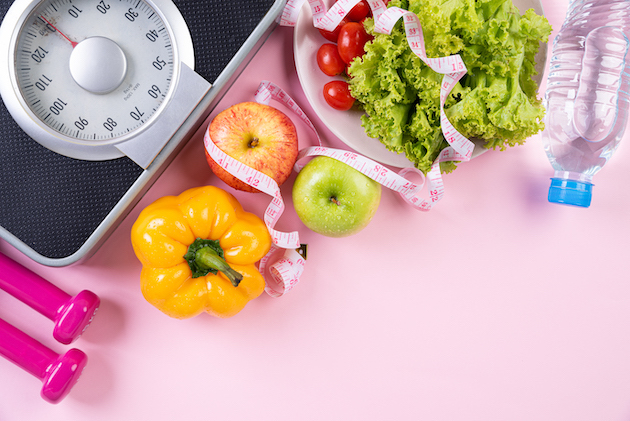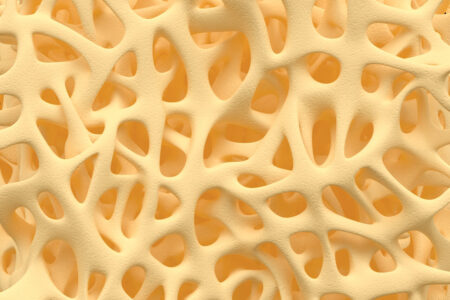The mushroom tea has been used as a health drink around the world for thousands of years. I remember that at some point, both at my grandmother's and in our childhood home, there was a jar on the kitchen shelf with a terrifying content for a child, in which some kind of slimy creature lived. It is said that this liquid was drunk, but I don't remember seeing anyone drinking it.
A forgotten dessert drink in the intervening years (or Eng. kombucha) is gaining popularity again in Europe and America. And it hasn't escaped my notice either. On one visit, I received a jar of mushrooms. Although I didn't show much enthusiasm for it, the mother of the family thought I should try brewing this healthful drink.
Below I will summarize what we know about this herbal drink today and how I went about brewing it. In addition to folk traditions, I also looked for scientific sources. There aren't many of them, but I did find something.
History of tea fungus
Benefits of Kombucha
Side effects and harmfulness of tea fungus
Where can I get tea?
Kombucha recipe
How to make a tea drink?
Summary
History of tea fungus
For such an ancient life form as tea and the drink made from it, the history is rather hazy. The earliest records of tea come from Manchuria (northeast China) around 220 BC. A Korean physician named Dr. Kombu introduced the tea drink to Japan sometime in the first half of the 5th century. It is believed that the drink Kombucha got its name from him.
The drink reached Europe in the early 20th century. Its popularity declined during World War II due to shortages of tea and sugar, but it soon began to be consumed again.
In America, the tea drink gained momentum in the early 1990s in connection with the spread of AIDS/HIV. Namely, it was hoped that kombucha would help strengthen T-cells and thereby fight the virus. But when kombucha consumption was linked to two cases of severe metabolic acidosis in 1995, one of which was fatal, the enthusiasm for making the tea waned among the masses.
As probiotics became more popular, the number of people brewing the tea beverage began to grow rapidly. A number of tutorials appeared online and starter kits were available to make it easier to get started.
Benefits of Kombucha

According to a study conducted among tea drink consumers in Russia at the beginning of this century,1 According to its users, the drink has a number of beneficial effects:
- detoxifies the blood,
- reduces cholesterol levels,
- reduces atherosclerosis by regenerating cell walls,
- lowers blood pressure,
- relieves inflammatory problems,
- relieves symptoms of arthritis, rheumatism and gout,
- promotes liver function,
- normalizes intestinal activity, balances the intestinal microbiome, treats hemorrhoids,
- reduces obesity and regulates appetite,
- helps prevent/improve cystitis and reduce kidney calcification,
- stimulates the glands,
- protects against diabetes,
- increases the body's resistance to cancer,
- has antibiotic effects against bacteria, viruses and yeasts,
- stimulates the immune system,
- treats bronchitis and asthma,
- reduces menstrual disorders,
- improves hair, skin and nail health,
- reduces cravings for alcohol in alcoholics,
- relieves stress, nervous system disorders and insomnia,
- helps with headaches,
- improves vision,
- slows down aging,
- improves overall metabolism.
This impressive list is based on the testimonies of tea drinkers. I can't imagine how people perceive the effects of the drink on cancer cells, the liver, or the microbiome, etc.
I have been drinking this drink quite regularly for a year or two. Maybe I am not as sensitive as the people who participated in the study, but during that time I have not felt that my health has improved in any way or has become worse during the break. I have justified my drinking this tea drink by saying that consuming fermented foods is beneficial, so I have taken it as an alternative to sauerkraut and yogurt.
However, just because you can't feel the positive effect right away doesn't mean it doesn't exist. Scientific research should also be able to identify hidden effects. So I looked to see if there were more specific studies than this survey conducted in Russia. It turns out that there are some.
Antibiotic effect
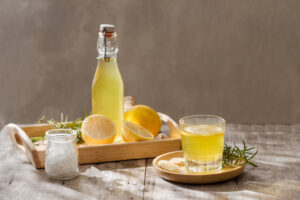
For example, researchers have studied the inhibitory effect of tea drinks on pathogenic microorganisms. There are a number of studies and the results are somewhat contradictory.2 ,3 Kombucha kills some pathogenic microbes and has an inhibitory effect on the growth of others, but for example: Candida albicans and Candida krusei he has no influence on the relationship.
In summary, studies confirm the antibiotic effect of kombucha on pathogenic microbes, which is due to the organic acids, mainly acetic acid, that the drink contains.4 To obtain a beneficial effect, the right level of acidity must be achieved when brewing a tea beverage. Not too low, not too high. The antimicrobial effect was detected in kombucha with an acidity of 33 g/l.5
While the tea drink is typically made from black tea, which is fermented for 7–14 days, Battikh6 He and his team also studied the antibiotic effects of a green tea-based beverage. In the experiments, the tea beverage was fermented for 21 days.
It turned out that a drink made from green tea has a greater antibiotic effect than a drink made from black tea. The drink made from green tea had a particularly strong antibiotic effect. Staphylococcus epidermidis, Listeria monocytogenes and Micrococcus luteus Among other things, it was also discovered that Candida opposite effect, more precisely then Candida parapsilosis against.
Antioxidant effect
Phytochemicals found in plants are attributed to antioxidant effects, which in turn are associated with cancer prevention, strengthening the immune system, and suppressing inflammatory processes. Jaybalan and his research team showed that the tea drink helps fight free radicals due to its antioxidant properties.7
Malbaša studied the antioxidant effects of three different teas in a beverage made from black and green tea using three different fungi.8 The classic tea gave the best antioxidant results with green tea. Fermentation took place at 28 degrees for 10 days.
The antioxidant effect of tea drink is due to the content of tea polyphenols and ascorbic acid, and fermented tea drink has a greater antioxidant effect than unfermented tea.9
The antioxidant effect increases during fermentation and depends on the fermentation time, type of tea, and tea microbiota. However, it is not recommended to overdo it with fermentation, as organic acids accumulate in the drink during fermentation, the level of which can reach dangerous levels if fermented for too long.
Antitoxic effect
Kombucha has been studied against a number of environmental toxins. These studies, mostly conducted on animals, have shown that the tea beverage has some protective effects against several toxins.
A mushroom drink made from black tea has been tested for paracetamol10, carbon tetrachloride11, aflatoxin B112, cadmium chloride13, TBHP14 and acetaminophen.15,16
These studies showed that kombucha could effectively attenuate the physiological changes caused by these liver-damaging toxins. However, it should be noted that the amount of kombucha, number of doses, treatment period, and route of administration used in these studies were not the same.
In this regard, one could hope that drinking kombucha would at least help to alleviate the harmful effects of paracetamol on the liver. For example, in the study cited above, which examined the adverse effects of paracetamol, rats were treated with kombucha for 15 days. This means that one could continue drinking kombucha for some time after the paracetamol course is over.
Most of these studies also recognized the beneficial effects of kombucha against various liver diseases, where oxidative stress is a well-known concomitant phenomenon.
Anticancer effect

Let's go a step further and investigate the anti-cancer effects of the tea drink. For many years, kombucha drinkers have claimed that the tea drink has strong anti-cancer effects. The same has been stated by the survey conducted in Russia mentioned above.
Cetojevic-Simin and her research team have studied the effects of kombucha made from black tea on cervical, colon, and breast cancer cells.17 They found that traditional black tea-based kombucha has an effect on preventing the proliferation of cancer cells. They also compared kombucha to regular, unfermented tea and found that kombucha's positive effect was stronger.
Most scientists accept the anti-cancer effects of polyphenols in regular tea, which include: inhibiting gene mutations and cancer cell proliferation, inducing apoptosis or cell death in cancer cells, and interrupting metastasis.18,19,20
If regular tea has an anti-cancer effect, then based on the aforementioned Cetojevic-Simin research, it can be argued that fermented tea is an even more effective cancer-preventing beverage.
Side effects and harmfulness of tea fungus
Despite the beneficial properties of the mushroom drink, there have been isolated cases of poisoning. There are isolated cases where dizziness, nausea and vomiting have occurred after consuming the mushroom drink. The mushroom drink is contraindicated and harmful for pregnant and lactating women and HIV-positive people.
Drinking mushroom drink stored in a glazed container can cause lead poisoning. Hygiene rules must also be followed when preparing the drink. Otherwise, problematic bacteria may start to multiply there. You should definitely not drink the drink if it has mold.
All of the reported side effects of tea have been very isolated and have affected a few people. There is no evidence that a properly prepared tea drink can be toxic or cause illness.21
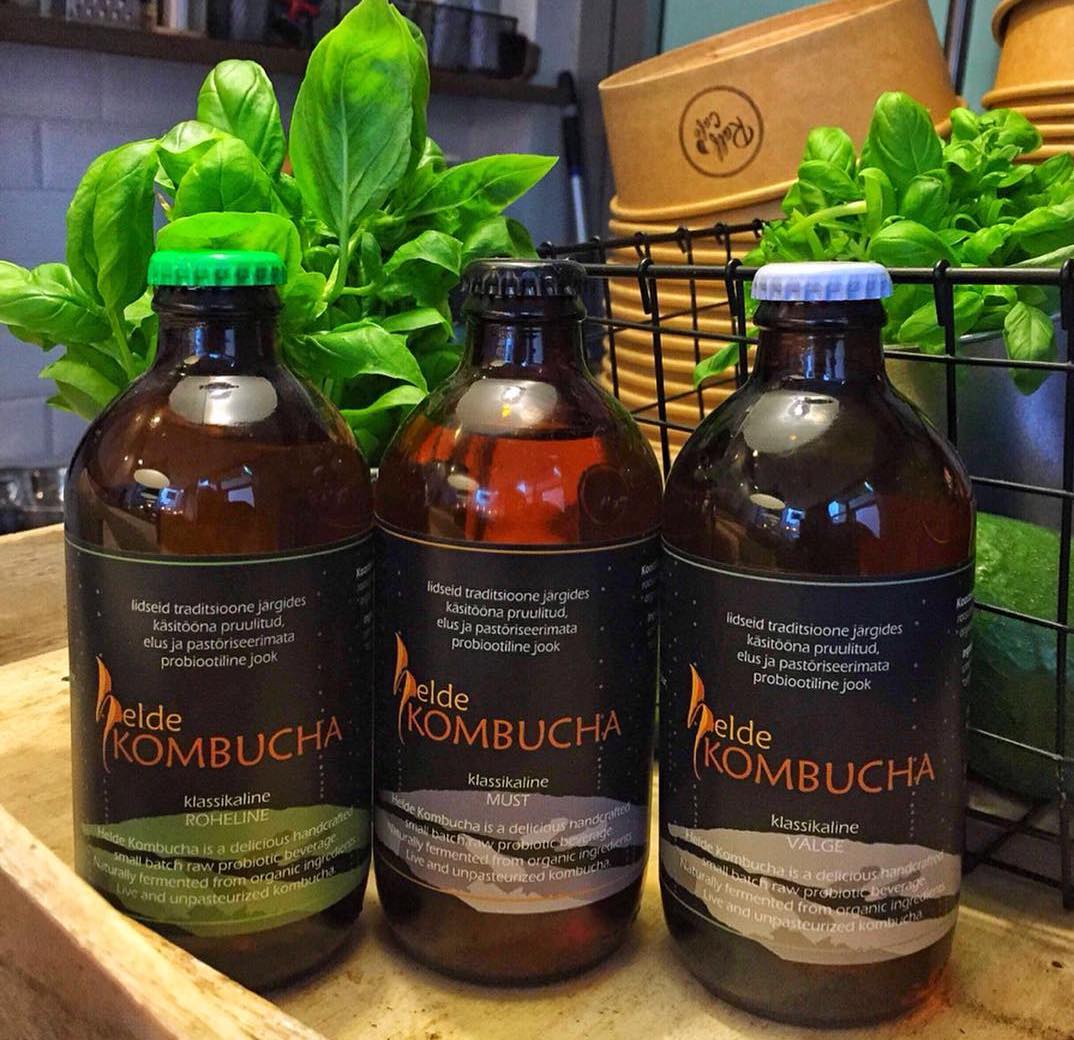
Where can I get tea?
Kombucha sales and prices in Estonia
Kombucha is also sold in stores, but as far as I know, it is often pasteurized, which means that it has lost most of its beneficial effects. In Estonia, it is also possible to buy unpasteurized kombucha from the retail network, but the price is relatively high for daily consumption. Therefore, the main and most basic way to provide yourself with this healthful drink is to either brew it yourself or find someone who is willing to make it in sufficient quantities for you.
Fortunately, it is not very difficult to make. However, it does take some time and experimentation to find a recipe and preparation method that suits your taste. It is also important to consider that the taste and cooking time will inevitably vary depending on the conditions at home and the changing seasons.
I have been brewing this drink for a few years now. Twice I have had to start over, throw away the mushroom and get a new one. The first time, the fermentation process stopped working after a longer break than the summer. The second time, the mushroom went moldy and had to be thrown away.
I drink about a glass of this drink a day. I have 2.5 liters of one laar and the average fermentation time is 11 days, so when a new laar is ready, the old one is usually finished or about to finish.
Kombucha recipe
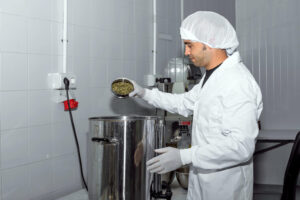
There are many different kombucha recipes, and as mentioned, finding your own takes some time. If you google a little, you will find quite a few variations on Estonian blogs, not to mention foreign language sources.
I based it on a recipe shared in a YouTube video and have mainly varied the tea varieties and environmental conditions.
Below I will share my recipe.
Ingredients
- 10 cups of water
- 1 cup white sugar
- 3 tbsp (15g) black tea (Greenfield Early Gray Fantasy)
- 1/2 cup of finished kombucha from the previous batch
- 1 teaspoon
Making Kombucha
Boil water, add tea and sugar and let steep for 10–15 minutes. Let the tea cool to room temperature, add the kombucha and tea leaves you set aside from the previous batch. Cover the jar with cheesecloth and place in a warm place out of direct sunlight for 7–14 days.
I recommend tasting the drink every day after day seven to get a sense of when it's time to start a new round. I have a fairly stable 11-day cycle, so I generally don't taste the drink before.
In addition to the first fermentation round, where fermentation takes place in the jar with the help of a fungus, the drink is often fermented a second time in bottles without the participation of a fungus. In my opinion, this gives the drink much better taste properties if done correctly. In addition, you can add spices, various dried fruits, berries or ginger when bottling.
During the first fermentation with the fungus, you can influence the taste with different tea varieties, but you should avoid teas flavored with synthetic flavors. When bottling, you can experiment with flavors much more freely without having to worry about damaging the fungus. You can even make a different flavor in each bottle.
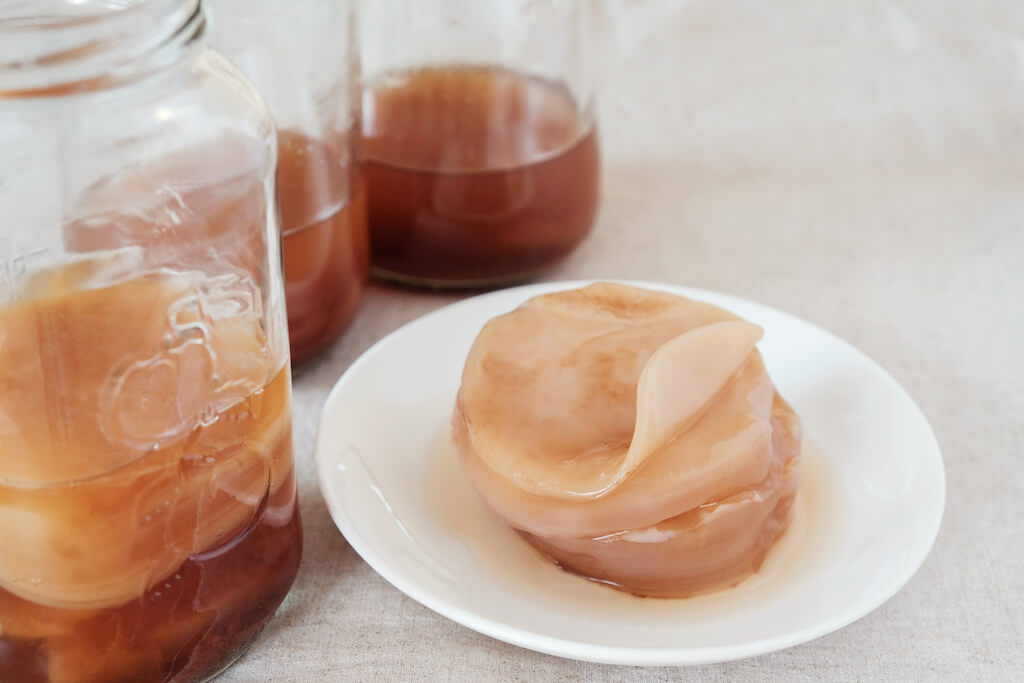
How to make a tea drink?
My drink making process
Over time, I have developed the following process, which for me is the most effective and takes the least time. Tools used:
- 1.6 l electric kettle
- 1.5 l glass teapot with a strainer for tea leaves
- funnel
- tight sieve
- airtight glass bottles (1 and 0.5 l bottles)
- a mug for measuring water and sugar
- tablespoon for measuring and stirring tea
- Brita pitcher or similar for filtering water
First I will prepare the tea.
- I boil filtered water (a Brita jug) with a kettle, pour the boiling water into a glass teapot, add sugar and tea grounds with a metal tea strainer. I don't measure the amount of water at the moment, I just boil as much water as the jug will hold.
- I let the tea steep for 10-15 minutes, remove the tea leaves and leave the tea to cool.
Fermented drink in bottles and new tea in jars
- Once the tea has cooled (it doesn't have to be at room temperature, because I also add cold water to the tea), I bring the jar of ready-made tea drink to the kitchen.
- I wash my hands and all tools I use to prevent contamination.
- I take the mushrooms out of the jar and put them in a separate bowl and pour 1/2 cup of the tea over them. Some sources say to rinse the mushrooms under warm water, others say it's not necessary. I've tried both ways and haven't noticed any noticeable difference.
- I pour the finished drink through a funnel and a sieve into glass bottles. I use two 1 liter and one half liter bottles for this. I close the bottles airtight and leave them in the kitchen to ferment for another 3-5 days. When the previous batch is finished, I start using the new one.
- I rinse the empty jar with warm water and dry the outside. Do not use dishwashing detergent when washing.
- Now it's time to refill the jar. To do this, I use a mug and start with the prepared tea. The teapot I use usually makes 4.5 mugs of tea. I fill the last, half mug of tea with filtered water and then continue filling the jar with filtered water. In total, the jar will hold 10 mugs of liquid. If possible, you can immediately prepare the required amount of tea or use boiled water instead of filtered water. The advantage of using boiled water is that the mineral content is lower and this makes it easier to prepare the mushroom drink. However, using filtered, unboiled water allows you to speed up the process a little, as adding cold water to the tea helps to reach the desired temperature faster.
- As a final step, I put the mushroom back into the jar with 1/2 cup of kombucha, cover the jar with cheesecloth, and return the jar to its original place. As mentioned, this place should be protected from direct sunlight. Personally, I prefer to store the jar in a cupboard. This way, the drink doesn't get as sour as it would if it were fermented on a shelf. After the second round of fermentation in bottles, the end result is relatively dry, meaning the sweetness has disappeared and the sourness is moderate. When fermenting on a shelf, i.e. in white, I haven't been able to capture this moment so well. The drink is either too sweet or too sour.
Ready drink in the fridge
- After 3-4 days, I pour the second fermented drink in 1 l bottles into 0.5 l dark glass bottles and put the bottles in the refrigerator. In principle, you could just put these bottles with the drink that has been fermented for 3-5 days in the refrigerator and gradually consume it from there, but I like to pour the drink in between. First, I had these 1 l clear glass bottles and I didn't want to start buying smaller ones to replace them. Second, it is also visually good to follow the process if the drink in the second round is in the same bottles and the final product fermented twice is in different ones. Third, pouring gives you the opportunity to pass the drink through a sieve again, so that there are usually no mushroom parts or suspended matter in the final product.
Regarding the material of the tools used, one more thing to note is that glass or metal tools should be used. Avoid plastic, wood and glazed ceramics. Some places recommend using pH test strips to achieve the best results, which are supposedly available from pharmacies. I went through all the pharmacies and found pH test strips only from Benu Pharmacy, and they also did not measure the acidity of the tea drink (they only work with saliva and urine). I ordered universal test strips from the brewery's online store, hoping that maybe they would work, but unfortunately I have not been able to get them to work either.
With each lari, the mushroom also grows a new layer, so if you feel like trying your hand at it yourself, feel free to ask. Starting from scratch without mushrooms is also possible, but it takes a very long time, and considering how quickly mushrooms grow and how many of them are thrown away, it makes more sense to ask someone for mushrooms along with a mug of kombucha to start.
Summary
The tea mushroom drink is prepared in homes around the world and is also brewed in mass production, including in Estonia. The final result depends on the tea variety, the amount of sugar, the fermentation time and environmental conditions (temperature and sunlight). Since there are no human experiments that would confirm the alleged healing properties, the medicinal properties of the drink are still being debated. At the same time, there are a number of so-called test tube and animal experiments that confirm that the tea mushroom drink contains a wide range of bioactive substances that are beneficial to us. There are also no confirmed studies regarding the contraindications and harmfulness of tea mushroom.
Although kombucha cannot yet be officially attributed with healing properties, it can be considered a healthy drink that is part of a healthy lifestyle and has potential beneficial effects on our health.

Allan Randlepp
NutritionistAllan is a nutritionist and trainer whose favorite topics are lifestyle and longevity, including nutrition and physical activity.
Chronic Inflammation and Anti-Inflammatory Foods
